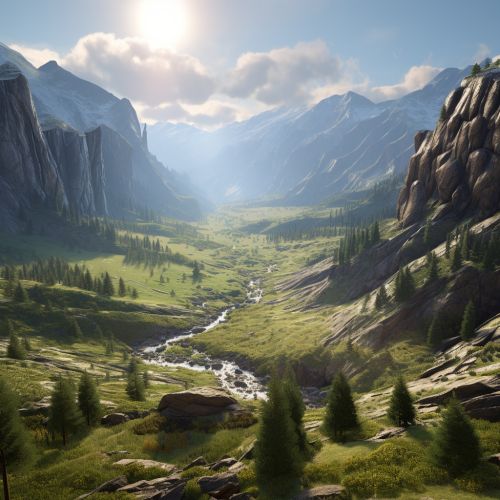Glacial Erosion
Introduction
Glacial erosion is a geological process where the movement of glaciers shapes the landscape by removing and transporting rock material. This process is responsible for creating various landforms and features in glaciated regions.
Types of Glacial Erosion
There are three main types of glacial erosion: abrasion, plucking, and quarrying.
Abrasion
Abrasion occurs when the glacier moves across the land, grinding and scraping the underlying rock with its load of rock debris. This process polishes the rock surface and can create striations, or grooves, in the bedrock.
Plucking
Plucking is the process where the glacier freezes onto the bedrock, and as it moves, it pulls out large chunks of rock. This process is most effective in areas where the bedrock is fractured or weakened.
Quarrying
Quarrying, also known as glacial plucking, involves the removal of large blocks of bedrock by the glacier. This process can create large depressions or 'quarries' in the landscape.
Factors Influencing Glacial Erosion
Several factors influence the rate and extent of glacial erosion, including the temperature and speed of the glacier, the hardness and structure of the bedrock, and the amount and size of debris carried by the glacier.
Temperature
The temperature of a glacier can significantly influence the rate of erosion. Warm-based glaciers, which are at the pressure melting point, are more erosive as they can slide over the bedrock, leading to more abrasion and plucking.
Speed
The speed of the glacier also plays a crucial role in glacial erosion. Faster moving glaciers erode more than slower ones due to the increased kinetic energy.
Bedrock Hardness and Structure
The hardness and structure of the bedrock can influence the rate of erosion. Hard, unfractured bedrock is more resistant to erosion than softer, fractured rock.
Debris Load
The amount and size of debris carried by the glacier can also affect the rate of erosion. A glacier with a large amount of coarse debris can abrade the bedrock more effectively.
Landforms Created by Glacial Erosion
Glacial erosion creates a variety of distinctive landforms, including cirques, arêtes, and U-shaped valleys.
Cirques
A cirque is a bowl-shaped depression carved by the erosive action of a glacier. Cirques are typically found at the head of a glacial valley.
Arêtes
An arête is a narrow ridge of rock which separates two valleys. They are typically formed when two glaciers erode parallel U-shaped valleys.
U-Shaped Valleys
U-shaped valleys, or glacial troughs, are formed by the erosive action of a glacier. They are characterized by their U-shape, in contrast to the V-shape of river valleys.


